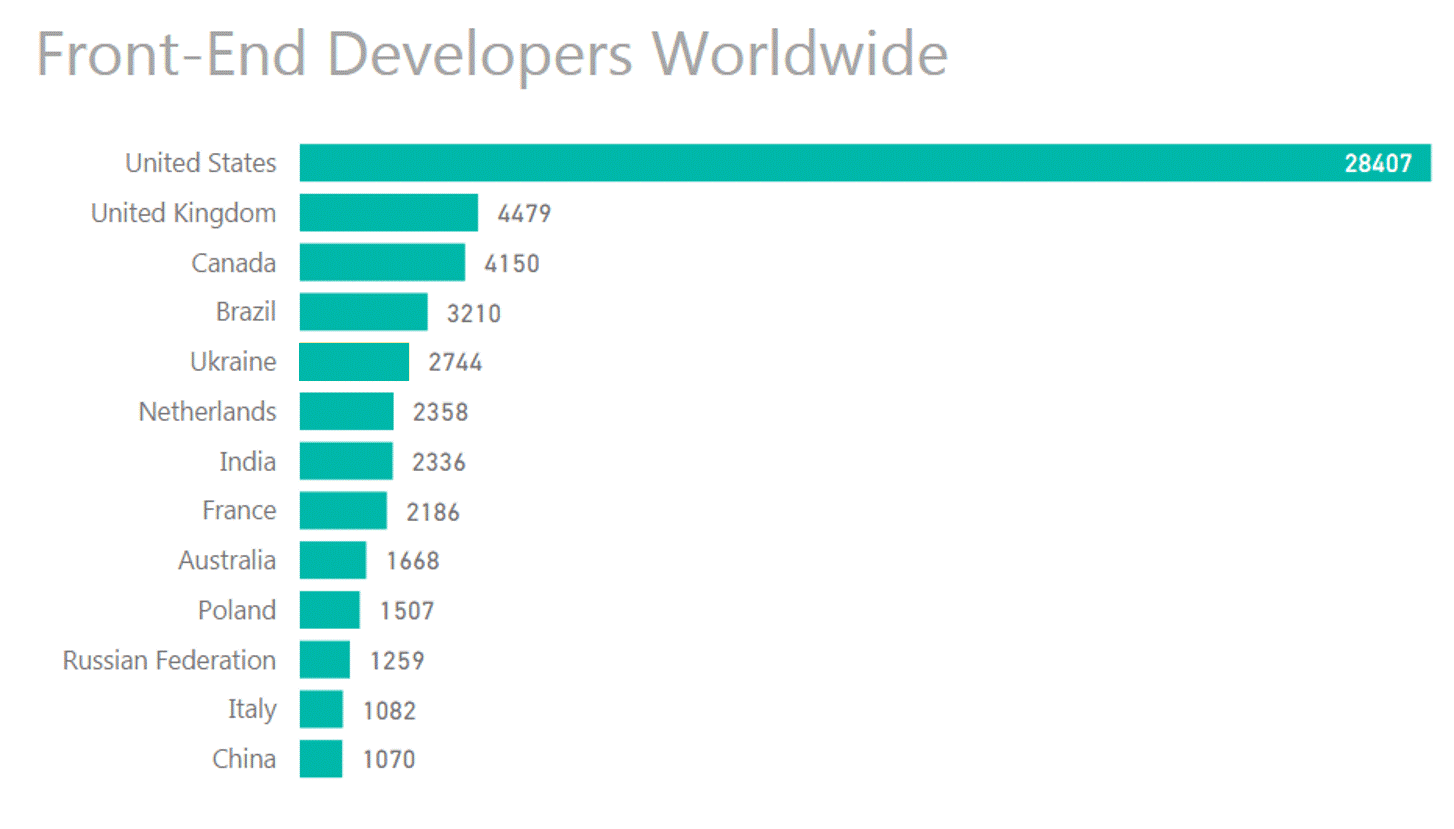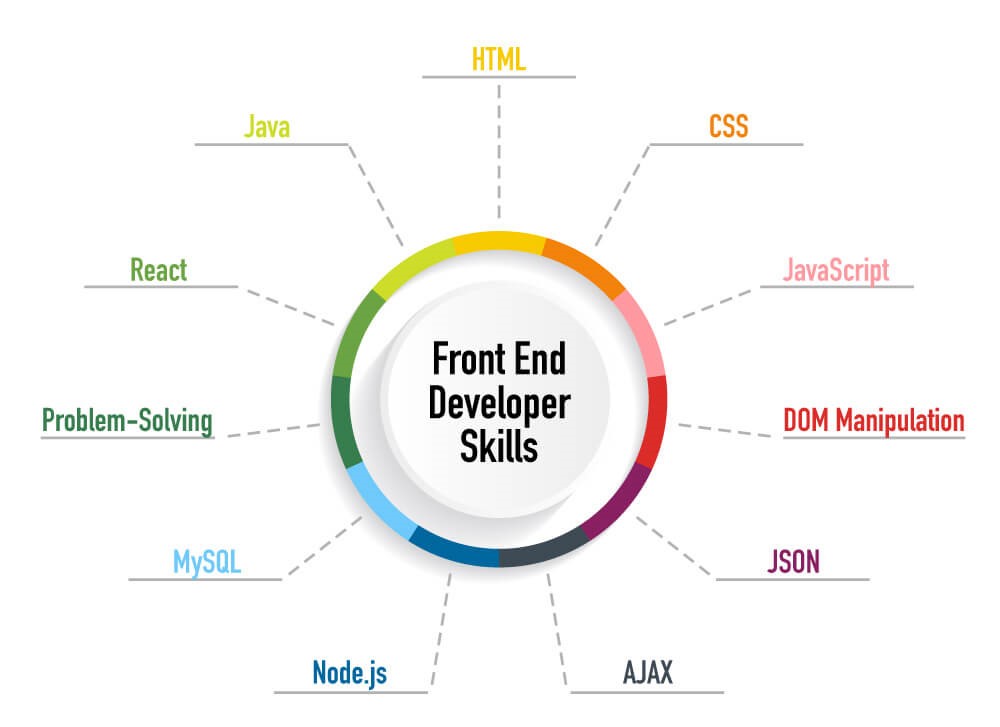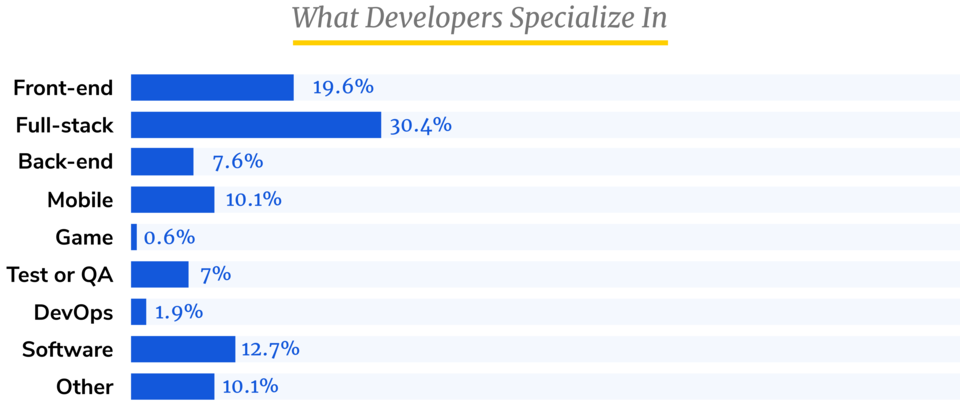10 to-die-for skills your front-end developers must have
- Sara Al-Bakri
- October 20, 2021
- 8 Minute Read

With new technologies like HTML5, CSS3, and Bootstrap, front-end developers can create interactive web applications that look and feel like native apps. They’re able to build responsive websites that adapt their design to fit smaller screens, making your website more user-friendly.
Front-end developers have a crucial role in today’s fast-paced digital marketing industry. They can do so much more than just coding a website. Make sure they’re doing it right!

With all of these opportunities at their disposal, it’s more important than ever for companies to choose an experienced front-end developer. Front-end developers are responsible for creating the look and feel of a website and the user experience.
They’re responsible for ensuring that your product is easy to navigate and runs smoothly across multiple devices. If you want to stay on top of the e-commerce industry, you must provide your front-end developers with the skills they need to succeed.
Top skills your Front-end Developers must-have
Front-end developers are the only ones who talk directly to customers, so they must be multi platform communicators. They understand what goes beyond just markup. These top skills that your front-end developer must-have and master, because that’s where the user interacts with the application. Having a front-end team that has these skills will significantly enhance your product experience.

Front-end web development requires a combination of creative and technical skills. These skills encompass:
1. Understand CSS and JS
The two languages enable you to customize your website to meet your needs. When it comes to building a website, you will need to be aware of basic things such as syntax, ordering, and validating CSS. The same goes for JavaScript.
You have to understand its structure well to achieve specific functionality in your web page. You can build a fantastic website without ever touching CSS and JavaScript, but you will never make the most out of it if you don’t know much about these two fundamental aspects of front-end development.
These two programming languages are now critical to the success of your site’s layout, design, content, and usability.
All good front-end developers must have skills to understand and can interpret HTML and CSS. However, some things aren’t within the scope of what CSS and HTML can do for you, and you need more than just these two languages to meet your needs.
This is where JavaScript comes into play. JavaScript allows developers to add functionality to websites. It provides interactivity and design patterns that make sites intuitive and easy to navigate. It also gives site owners more control over the appearance of the content on their site.
2. Know your JavaScript framework
Each framework has different characteristics, learning curves, and advantages over the other ones. Some of them are simple; others are more complex. It all depends on what you want to do with your website, how many people will be working on it, and how much time you want to spend learning it.
When choosing a JavaScript framework for your next project, keep in mind things like the number of developers working on your website; whether they’ve worked with it before; how long it will take them to learn; if they’ll need support (for example, through forums or chat); whether they like it or not; etc.
Before, JavaScript was only used to enhance the user experience. Now it’s being used to entire power websites. Front-end developers who know JavaScript frameworks like AngularJS and ReactJS can do wonders for your project.
3. Development best practices
The Front-end is no place to reinvent the wheel. From best practices, tools and frameworks to processes and organizational structure, there’s a lot of stuff you can and should learn from the collective wisdom of the web development community.
The chances are that your team will have its own internal set of development best practices. Front-end development is a very dynamic field that changes all the time. It’s hard to keep up with the latest JS frameworks and design trends.
To be a successful front-end developer, you need a strong understanding of HTML, CSS and JavaScript—and not only the basics. You need to build complex interactive web pages, solve tricky problems and make your users happy.
It’s not enough to blindly follow instructions — you also need to be able to think outside the box and come up with creative solutions. Whenever you’re working on a team, there’s always more to do than hours in a day — and that’s where your sense of responsibility comes into play.
Developers in this category are often referred to as UI/UX designers because they need to think in three dimensions. They need enough knowledge in accessibility and web standards to ensure your site works well on all devices and browsers. They should be able to suggest improvements without breaking anything.
4. Debugging
The ability to find and fix bugs is an essential part of creating reliable, secure code. Debugging can be done manually or with automated tools. Developers will need to know how to use the debugging functionality provided by their development environment.
Use breakpoints in browsers. Browsers’ developer tools allow you to set breakpoints. When the browser hits a break point, it pauses before executing the line of code that caused the break point to be triggered, allowing for investigation of what is happening then or execution of other statements before resuming normal execution.
Breakpoints are typically used when there’s a problem with page layout or rendering, but they can also be used for general problem-solving. For example, you can put a break point on a function call and step through the code as it executes to see what is happening.
Debugging is an essential skill because it’s the process of finding and fixing mistakes in source code.
Many people think that if their code runs without any visible errors, it means it is error-free. But in fact, there can be hidden bugs in your program that only show up at run-time (that is when the program runs) and cause problems.
5. Assets Management
The best assets management skills are essential for your front-end developers because they allow them to view the site as a whole and make changes that won’t affect the rest of the project. This way, they can focus on design and functionality without worrying about inconsistencies between CSS, images and HTML.
Front-end developers are often asked to manage assets such as images and fonts as part of their job. Although the file management tools that come with your OS may not be as powerful as a dedicated asset manager, they’ll do in a pinch.
Front end developers are the people who do the visual design, create the graphical interface and develop the website’s functionalities. They work in close collaboration with the company’s business and program management team to accomplish their goals. You can use a sprint planning template to ensure you hit your deliverables as a team.
They must have many skills, including HTML5, CSS3, JavaScript and possibly even some server-side languages such as PHP or Python.

6. Learn your way around a code editor
Every developer has their favorite code editor. It can make or break your development experience.
From the basic to the most sophisticated, here are some of the key features that your developers need to know how to use:
Syntax highlighting: This feature highlights specific parts of your code, making it easier to read and spot errors. Most editors have syntax highlighting built-in, but the more advanced ones have custom syntax highlighting for different programming languages. These are known as plug-ins.
Most editors also let you highlight specific words or phrases so you can search them later. You can use this feature to search for particular characters, keywords, strings, functions, classes and routines.
Code auto-completion: This is a time-saver feature that helps developers write code faster by suggesting options as they type. Some code editors will display a list of possible options given what’s already typed into the code editor window. Other programs will automatically complete the rest of a line of code based on what you’ve already entered.
Code folding/hiding/unhiding/showing all function blocks at once/outlining code blocks/folding regions/expanding regions/collapsing parts are beneficial features if you deal with lots of nested functions or large files.
7. Implementing design patterns in code
Front-end developers love to play with new technology, and one of the most popular things to do is explore and implement new design patterns. Design patterns are reusable solutions to common problems. They help us extract common logic from projects, make our code more maintainable and easier to reuse.
Having good design skills are one of the crucial top skills that your front-end developers must have to create better websites. They know how to use HTML and CSS, but they also understand how user interfaces work. That’s why front-end developers are often given the job of implementing design patterns in code.
By nature of their job, front-end developers are expected to be well-versed in design patterns. They know that not every project needs the same set of functionality, so they should read through a spec and advise on what should be included in the project. Skilled front-end developers are also able to implement design patterns within applications.
8. Extract libraries for scoped CSS
It’s excellent to scope your CSS using classes or element IDs, but there are many times where you’ll need to use element type or attributes. For instance, you might want to target all anchors that look like buttons or all images next to each other.
More than likely, you’ll be doing this manually by adding a class name to the tag. But if you’re still coding in some text editor, this will get old fast.
CSS preprocessors allow us to turn any stylesheet into a program – and we can run it through a compiler at build time and generate clean and maintainable CSS. They can help in things like:
- Create small reusable components;
- Build “objects” with their styles; or
- Extract libraries for scoped CSS.
9. Develop a good understanding of web design principles
Deciphering between design elements and code implementation is crucial to creating a website that doesn’t just look good but works well and is easy for users. Here are some web design principles and techniques that every front-end developer should know:
a. Progressive enhancement
Progressive enhancement is a technique for building websites that ensures content and functionality will display appropriately on all devices, even those with limited capabilities. This ensures no one will miss out on your content or functionality because their device isn’t capable of supporting it.
b. Semantic HTML
Semantic HTML is essential for accessibility because it allows screen readers to correctly interpret the structure of a page and present it to users in a way that makes sense to them – essentially allowing them to browse the website as if they could see it themselves. It also means developers can build one site that works well across different browsers without creating multiple versions of the same site based on additional browser support.
10. Be familiar with various database layouts
There are different database layouts used in websites today, but most fall under three major categories:
Three-tier architecture. This is probably the most common layout for web applications today. It comprises the following components:
- User interface (UI) – All the screens that users see when visiting a website or using an application.
- Business layer – The software responsible for handling business logic, performing data modeling, executing transactions, etc.
- Data tier – It is where data persists. Using the above-mentioned three-tier architecture diagram, this would be the database server. Two-tier architecture or fat client architecture. This is similar to three-tier architecture, except it has only two tiers: the UI and the other consisting of both business logic and database management.
Also read: Must-have tools to help you manage your team of remote developers
Wrapping Up
Keep in mind these top skills your front-end developers must have that will give your website competitive edge. The most sought-after developers in the world can create and maintain high-quality user interfaces and experiences. So how do you hire and cultivate your next rock star? By learning to spot ten critical traits that every great front-end developer needs to know.


Thank you for submitting the details!
We will keep your information safe. Feel free to contact us with any questions at hello@uplers.com
Please check your email for next steps shared by Robert.














